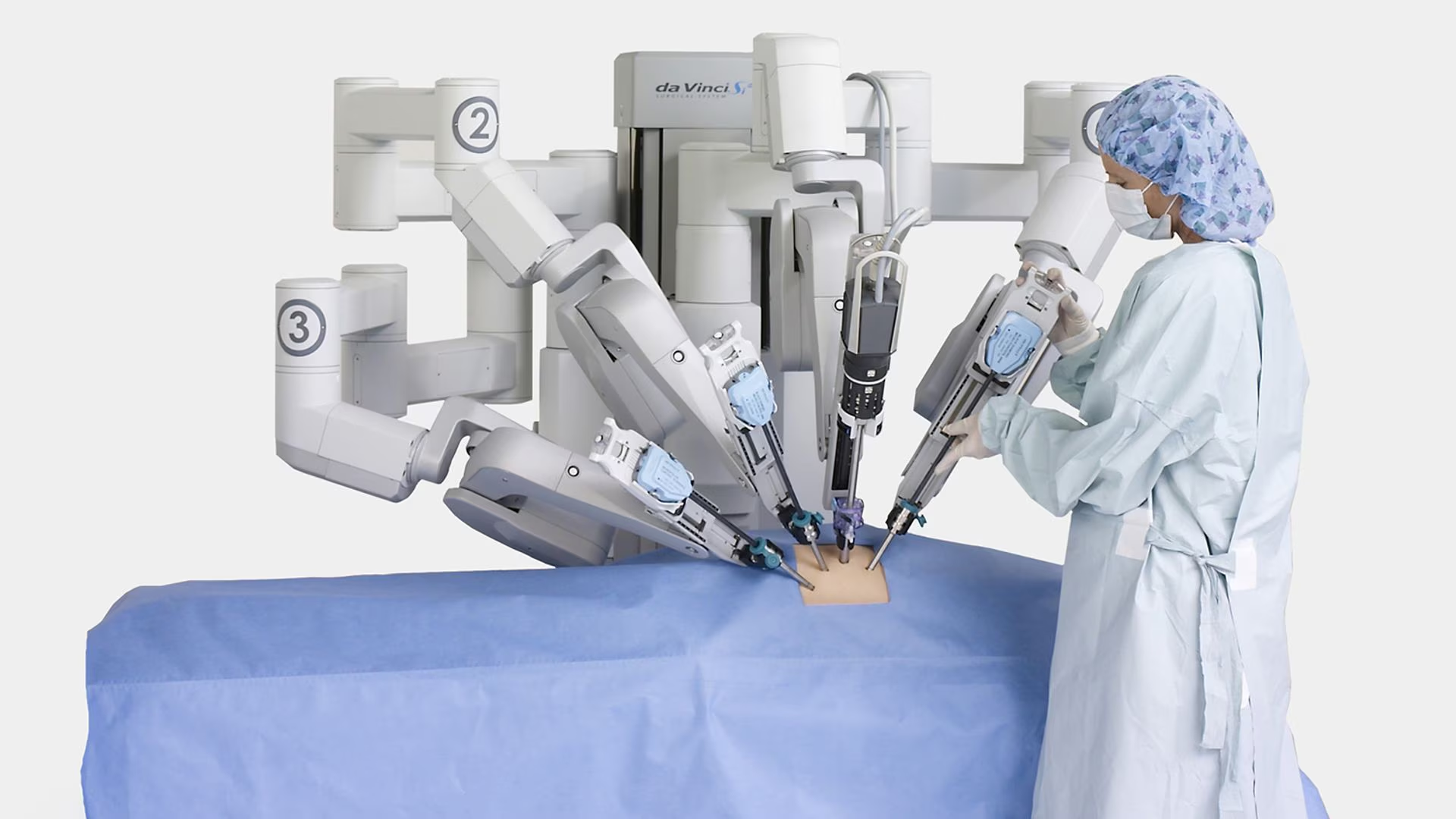Imagine a world where surgery feels almost like controlling a high-tech video game—a world where a surgeon, sitting at a console far from the operating room, can manipulate tiny robotic arms with the precision of a master artist.
Musumeci Online – The Podcast. It is perfect for driving, commuting, or waiting in line!
Welcome to the revolutionary realm of the Da Vinci Robot, the most advanced robotic system for minimally invasive surgery.
Developed to perform complex operations with the gentlest touch, the Da Vinci Robot has quickly become a favorite in hospitals across specialties—from urology and gynecology to thoracic and general surgery. For instance, at Humanitas Hospital, you can find both the latest Da Vinci Xi model and its predecessor, the Si model, working side by side to provide cutting-edge patient care.
How Does the Da Vinci Robot Work?
The magic behind this technology is both simple and futuristic. Picture a skilled pilot controlling a spacecraft using a joystick and pedals. In the operating room, the surgeon sits at a console that looks a bit like a pilot’s cockpit. With a set of hand controllers and foot pedals, the surgeon directs the robot’s arms, which are fitted with tiny, precise instruments inserted through small incisions—each no bigger than a few millimeters.
Thanks to high-definition, 3D visuals, the surgeon sees an enlarged view of the operative field, up to 6 to 10 times bigger than the naked eye could see. This is similar to using a powerful zoom lens on a camera, allowing for a clearer, more detailed view of the tiniest structures within the body.
In the operating room, the surgeon sits at a console that looks a bit like a pilot’s cockpit. With a set of hand controllers and foot pedals, the surgeon directs the robot’s arms
The Three Main Components
While the technology might sound complex, it breaks down into three main parts:
- The Surgical Console:
This is where the magic happens. Located outside the sterile area, the console lets the surgeon control the robot’s movements with two joystick-like manipulators and pedals. The console also displays a magnified 3D view of the patient’s anatomy, enabling the surgeon to work with remarkable precision. Think of it as a video game controller that has been supercharged to eliminate natural hand tremors, making even the most delicate tasks manageable. - The Patient Cart:
This component holds the robotic arms that actually perform the surgery. Equipped with Endowrist instruments—named for their almost 360° range of motion and seven degrees of freedom—these arms can move much more freely than a human wrist, allowing for intricate maneuvers that traditional surgery simply can’t match. - The Vision Cart:
At the heart of this unit is a high-definition video system that captures and transmits the surgical field in crystal-clear detail. With a 60° field of view and the ability to zoom in dramatically, the vision cart ensures that every tiny detail is visible, much like having a high-powered microscope during the procedure.
A fun anecdote: Some surgeons compare their first experience using the Da Vinci Robot to the thrill of flying a high-performance drone. It’s that same mix of excitement and responsibility—a feeling that you’re navigating uncharted territory, yet with all the technological support you could ever need.
What’s New with the Da Vinci Xi?
The latest model, the Da Vinci Xi, represents a significant leap forward from the Si model. One key innovation is the way its arms are positioned—they now descend from above rather than being fixed to the sides. This new approach, guided by computer algorithms that map out the human anatomy, minimizes any clashes between instruments. Imagine having a team of dancers moving in perfect harmony, each step carefully choreographed to avoid stepping on each other’s toes.
Another exciting feature is the “Grab and Move” system, which speeds up the repositioning of the arms, ultimately reducing the overall time needed for surgery. Additionally, the Xi comes with all the advanced options previously available—such as fluorescence imaging and robotic suturing tools—making it an all-in-one platform for modern surgery.

A Special Mention: The Da Vinci Single Site
For procedures where cosmetic results and minimal discomfort are priorities, the Da Vinci Single Site platform is a game changer. By allowing surgeons to operate through a single small incision at the belly button, it offers outcomes similar to traditional laparoscopic surgery but with improved aesthetics and reduced post-operative pain. It’s like replacing a big, noticeable scar with a barely visible mark—a subtle difference that can mean a lot for a patient’s confidence and comfort.
The Impact on Patient Care
The benefits of robot-assisted surgery with the Da Vinci system are profound:
- Smaller Incisions: These lead to less tissue trauma.
- Reduced Blood Loss: Minimizing the need for transfusions.
- Shorter Hospital Stays: Patients typically recover faster.
- Faster Return to Daily Life: Quicker recovery means you can get back to enjoying your favorite activities sooner.
- Enhanced Precision: The system’s accuracy makes even the most complex procedures safer and more effective.
For many patients, the Da Vinci Robot represents hope—a symbol of how technology is reshaping medicine, making surgeries safer and recovery quicker. It’s a vivid reminder that innovation can turn once-dreaded operations into manageable, even almost futuristic, experiences.


Leave a Reply